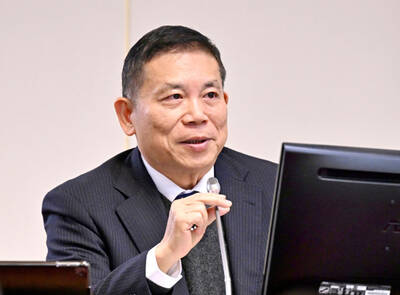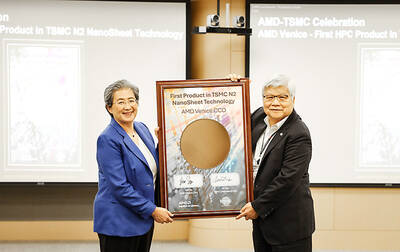As doubts grow over China’s vast Belt and Road Initiative, the EU is launching an alternative plan for Asia that it says will not saddle countries with debt they cannot repay.
EU member countries are expected to sign off on the new “Asia connectivity strategy” — which aims to improve transport, digital and energy links, while promoting environmental and labor standards — in time for a major summit of European and Asian leaders next month.
Brussels insists the scheme is not a response to any other player, but its launch comes as the sheen fades on Beijing’s “new Silk Road” initiative, which envisions railways, roads and ports being built across the globe using billions of dollars in Chinese loans.
Talks have been going on for several months with a number of Asian countries that were “interested in looking at the European way,” EU High Representative for Foreign Affairs and Security Policy Federica Mogherini said.
“Our initiative will aim at creating jobs and economic growth and benefits for the local communities,” she said. “I would not say if this is different from other’s proposal, but this is our proposal.”
The new strategy comes after European Commission President Jean-Claude Juncker called for a more muscular EU foreign policy to match the bloc’s economic clout, taking on not just US President Donald Trump’s “America First” approach, but also China’s energetic involvement in Africa and Asia.
The initiative was a “very important step” after criticism of the EU in some quarters that it has been slow to respond to Chinese soft power plays, said Maaike Okano-Heijmans, an EU-Asia relations expert at the Clingendael Institute in the Netherlands.
“We cannot accuse them of not having a vision any more. The challenge is how to turn this into something that’s really an alternative to some countries, because that requires money and more money and more money,” Okano-Heijmans said. “Nobody can rival Chinese money.”
Chinese President Xi Jinping (習近平) earlier this month said that China’s trade with Belt and Road countries had exceeded US$5 trillion, with outward direct investment surpassing US$60 billion.
However, some countries are beginning to question whether the strings attached to the money make it more of a burden than a benefit.
While much of the hard detail of the EU scheme — including the vital question of finance — is yet to be worked out, the proposal stresses the importance of “high environmental and social standards” and of the “fiscal and financial sustainability of infrastructure projects.”
This appears designed to directly address a major criticism of the Belt and Road Initiative, launched in 2013, that the apparent Chinese largesse is effectively creating debt traps.
These fears were highlighted last year when Sri Lanka had to grant a 99-year lease on a strategic port to Beijing over its inability to repay loans for the US$1.4 billion project.
Concerns have grown and last month Malaysia said it was shelving three Beijing-backed projects, including a US$20 billion railway, while Pakistan — until recently an enthusiastic recipient of Chinese money — has vowed more transparency amid fears about the country’s ability to repay loans.
As cybersecurity becomes an increasingly important consideration for governments around the world, the EU’s insistence on transparency might prove more appealing than involvement in China’s “digital Silk Road,” said Philippe le Corre, senior fellow in the Europe and Asia programs at the Carnegie Endowment for International Peace.
“It’s basically allowing Chinese telecoms companies to build infrastructures in these countries, gifting access to portals and e-commerce platforms, anything digital,” Le Corre said. “You’re basically having a Chinese footprint on a very long term and you’re not leaving an alternative.”
Some countries are beginning to realize, Le Corre said, that “it’s not good to put all your eggs in the same basket and that being a dependent of the Chinese empire is a big risk, certainly when it comes to controlling information and controlling technology.”

Taiwan will prioritize the development of silicon photonics by taking advantage of its strength in the semiconductor industry to build another shield to protect the local economy, National Development Council (NDC) Minister Paul Liu (劉鏡清) said yesterday. Speaking at a meeting of the legislature’s Economics Committee, Liu said Taiwan already has the artificial intelligence (AI) industry as a shield, after the semiconductor industry, to safeguard the country, and is looking at new unique fields to build more economic shields. While Taiwan will further strengthen its existing shields, over the longer term, the country is determined to focus on such potential segments as

UNCERTAINTY: Innolux activated a stringent supply chain management mechanism, as it did during the COVID-19 pandemic, to ensure optimal inventory levels for customers Flat-panel display makers AUO Corp (友達) and Innolux Corp (群創) yesterday said that about 12 to 20 percent of their display business is at risk of potential US tariffs and that they would relocate production or shipment destinations to mitigate the levies’ effects. US tariffs would have a direct impact of US$200 million on AUO’s revenue, company chairman Paul Peng (彭雙浪) told reporters on the sidelines of the Touch Taiwan trade show in Taipei yesterday. That would make up about 12 percent of the company’s overall revenue. To cope with the tariff uncertainty, AUO plans to allocate its production to manufacturing facilities in

COLLABORATION: Given Taiwan’s key position in global supply chains, the US firm is discussing strategies with local partners and clients to deal with global uncertainties Advanced Micro Devices Inc (AMD) yesterday said it is meeting with local ecosystem partners, including Taiwan Semiconductor Manufacturing Co (TSMC, 台積電), to discuss strategies, including long-term manufacturing, to navigate uncertainties such as US tariffs, as Taiwan occupies an important position in global supply chains. AMD chief executive officer Lisa Su (蘇姿丰) told reporters that Taiwan is an important part of the chip designer’s ecosystem and she is discussing with partners and customers in Taiwan to forge strong collaborations on different areas during this critical period. AMD has just become the first artificial-intelligence (AI) server chip customer of TSMC to utilize its advanced

Chizuko Kimura has become the first female sushi chef in the world to win a Michelin star, fulfilling a promise she made to her dying husband to continue his legacy. The 54-year-old Japanese chef regained the Michelin star her late husband, Shunei Kimura, won three years ago for their Sushi Shunei restaurant in Paris. For Shunei Kimura, the star was a dream come true. However, the joy was short-lived. He died from cancer just three months later in June 2022. He was 65. The following year, the restaurant in the heart of Montmartre lost its star rating. Chizuko Kimura insisted that the new star is still down